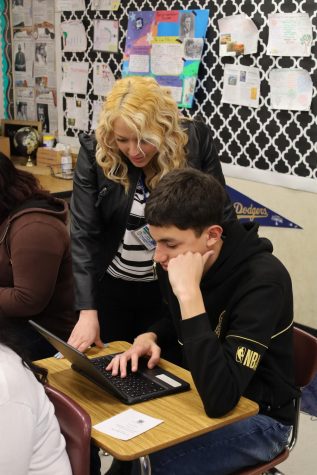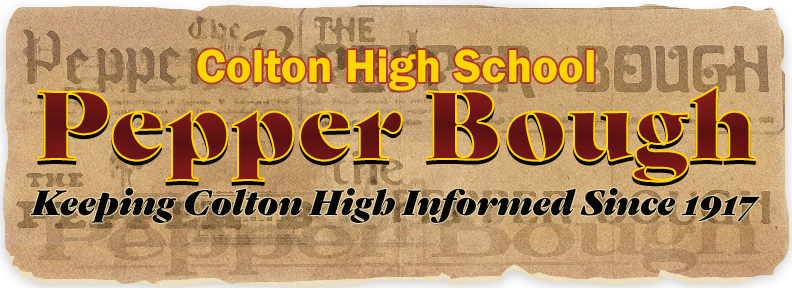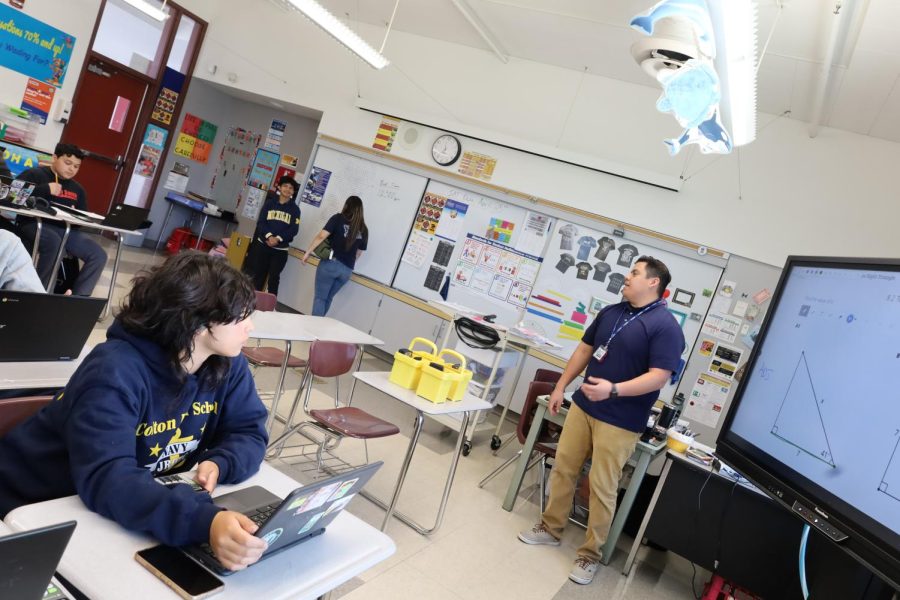Opinion: Change to sub requirements has impact on CHS
Subs weigh in on state decision to waive CBEST. Is this a good thing?
Substitute teacher Frank Garza supports students in Ms. Tarleton’s geometry class.
April 7, 2023
On January 11, 2022, California Governor Gavin Newsom signed Executive Order N-3-22. This executive order relaxed state regulations regarding the hire of substitute teachers.
It allowed for temporary certificates to be issued to substitute teachers to allow them to work in classrooms, suspended retirement regulations that prohibited retirees from working without affecting their retirement status.

Since schools reopened in 2021 after the year long pandemic closure, there has not only been a shortage of classroom teachers, but substitute teachers as well. At Colton High School, it is not uncommon for credentialed staff to be tasked with covering for absent colleagues during student-free prep periods. The substitute teacher shortage has stretched the workloads for educators at all levels in the district.
While the executive order helped, it didn’t help enough, as it expired almost four months after being signed, on March 31. 2022.
On September 15, 2022, however, the Governor took another step towards solving the problem, approving SB 1397. According to Annais Magana, CJUSD certificated Human Resources Coordinator, this bill directs the Commission on Teacher Credentialing (CTC) to waive the California Basic Educational Skills Test (CBEST) requirement until July 1, 2024.
This means that in order to obtain a 30-day substitute teacher permit, only a bachelor’s degree is required.
One of Colton’s regular substitute teachers, Janelly Casillas, is optimistic about the change. “No longer requiring the CBEST could be good in some cases because it opens up the door for more new people.”
Casillas also added that the basic skills test was easy and an average high school student could pass it.
While it seems that the CBEST is pretty easy to pass, not everyone is an excellent test-taker, and each time the test is taken, it comes at a cost to the potential substitute. Manuel Vargas, a substitute teacher at CHS, said, “It should be easier to become a sub. You shouldn’t have to pay for a test.”
But not every substitute agrees. Brian Rosales Garza thinks getting rid of the CBEST requirement was a bad move. “I think it’s kind of a bad idea because anyone that doesn’t know about education can just walk in and go into a class they know nothing about.”
As the change in the requirement, along with an increase in pay, has brought in more substitutes to the district, it begs the question: what is the role of a substitute? Are they merely “babysitters,” as some believe, or should they provide more for students and the educators whom they support?
According to substitute Frank Garza, subs are not here to teach. “I think substitutes are just class regulators that are there to enforce the school rules.”
Yet, without a testing requirement to prove basic skills, why should we trust substitute teachers to teach in the classroom?
The answer lies in what the district is doing to support its new wave of substitute teachers. Magana shared at CJUSD “provides substitute teachers with 1-to-1 appointments during pre-employment in addition to paying for fingerprint clearance.” She also shared that the district pays for the substitute tuberculosis clearances, as well.
This means that the new influx of substitute teachers are safe to be in the room, and having a bachelor’s degree, which means they met at least the minimum requirements of their university, indicates they are capable of handling the basic skills needed as well.
So, overall, having more substitute teachers is good for all of us.






